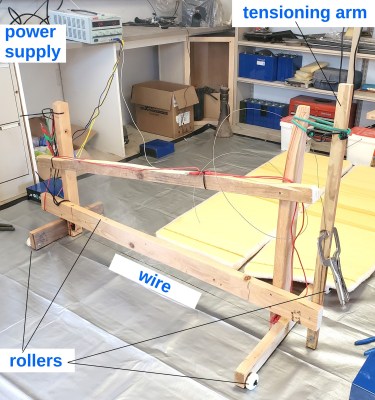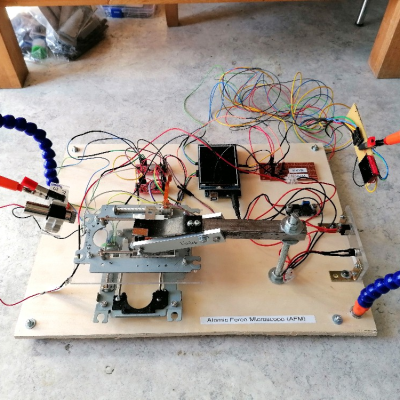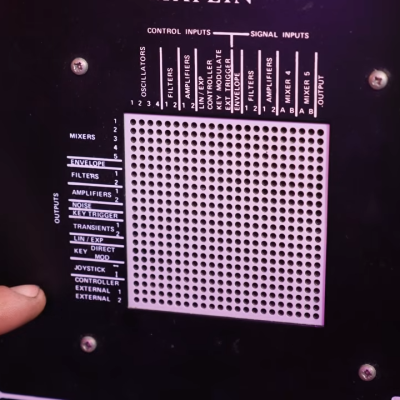There’s many different reasons why somebody might have to hack together their own solution to a problem. It could be to save money, or to save time. Occasionally it’s because the problem is unique enough that there might not be an accepted solution, so you’re on your own to create one. We think the situation that [Raph] recently found himself in was a combination of several of these aspects, which makes his success all the sweeter.
The problem? [Raph] had a pair of foam mattresses from his camper van that needed to be made thinner — each of the three inch (7.62 cm) pieces of foam needed to have one inch (2.5 cm) shaved off as neatly and evenly as possible. Trying to pull that off over the length of a mattress with any kind of manual tools was obviously a no-go, so he built a low-rider foam cutter.
 With the mattresses laying on the ground, the idea was to have the cutter simply roll across them. The cutter uses a 45″ (115 cm) long 14 AWG nichrome wire that’s held in tension with a tension arm and bungee cords, which is juiced up with a Volteq HY2050EX 50 V 20 A variable DC power supply. [Raph] determined the current experimentally: the wire failed at 20 A, and cutting speed was too low at 12 A. In the end, 15 A seemed to be the sweet spot.
With the mattresses laying on the ground, the idea was to have the cutter simply roll across them. The cutter uses a 45″ (115 cm) long 14 AWG nichrome wire that’s held in tension with a tension arm and bungee cords, which is juiced up with a Volteq HY2050EX 50 V 20 A variable DC power supply. [Raph] determined the current experimentally: the wire failed at 20 A, and cutting speed was too low at 12 A. In the end, 15 A seemed to be the sweet spot.
The actual cutting process was quite slow, with [Raph] finding that the best he could do was about 1/8″ (3 mm) per second on the wider of the two mattresses. While the result was a nice flat cut, he does note that at some point the mattresses started to blister, especially when the current was turned up high. We imagine this won’t be a big deal for a mattress though, as you can simply put that side on the bottom.
In the end, the real problem was the smell. As [Raph] later discovered, polyurethane foam is usually cut mechanically, as cutting it with a hot wire gives off nasty fumes. Luckily he had plenty of ventilation when he was making his cuts, but he notes that the mattresses themselves still have a stink to them a couple days later. Hopefully they’ll finish outgassing before his next camping trip.
As you can imagine, we’ve covered a great number of DIY foam cutters over the years, ranging from the very simple to computerized marvels. But even so, there’s something about the project-specific nature of this cutter that we find charming.



















